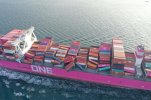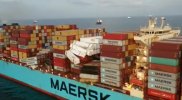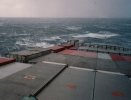I was a young 3M on the mid watch off Cape Hattaras in heavy WX-three house ship. Seas were probably about 30-40 ft. Small loaded tanker (28KDWT). The Capt. said ...the door to the square has broken open...take an AB and go secure the door. I had about 2 yrs experience! We put on jackets, and went onto the main deck and started dogging the door, AB yelled "watch out mate" as he grabbed the underside of the catwalk and pulled him self out of the way of the 3-4 feet of green water crossing the main deck. I was washed over to the port side and pinned against the railing. Close call. Wet and excited - we secured the door and returned to the bridge. The Old Man watched what occurred and didnt say anything (he knew he had made a mistake sending us out there-20 tons of water in the square would not threaten the ship). He should have know better to send us down there. This Near miss could have been the end. Fast forward 15 years. I'm the CM on a large tanker in the Mediterranean, were taking on green water over the quarter (freeboard 40 ft midships). A half 55 gallon drum breaks loose on the main deck during the 08-12. The 3M says, I can go down there and secure that...no stay here. It might damage a COW machine or something...but you're not going on deck. Lesson learned there hard way. Lessons are only learned when acted upon.





